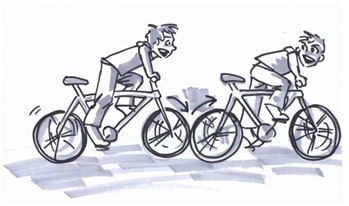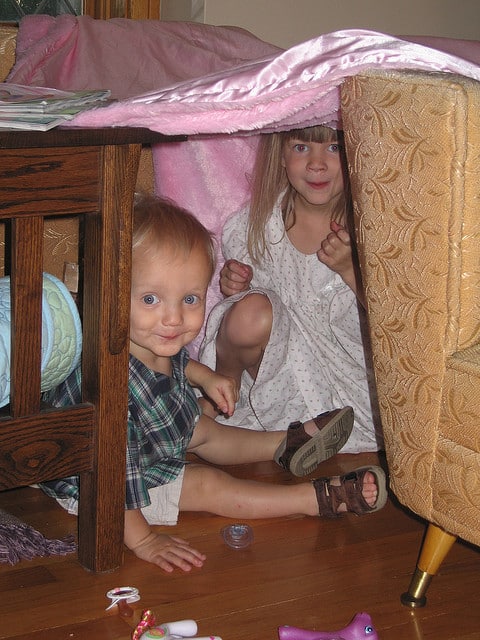When you reminisce and think of your brightest, fondest memories of childhood play, what comes to mind? You might recall hours in front of a Monopoly board or days spent crafting intricate models made from LEGO bricks, but are those truly your most treasured memories? Or is it the recollection of rowdy games of freeze tag in the front yard or wrestling with your little brother in a makeshift ring that you hold closest to your heart?
Perusing the submissions for the America at Play: Play Stories Video Contest, I realized that, while we might remember quiet, structured play, our favorite stories often stray from instruction books and indoor voices, and sometimes even involve a touch of danger. We remember the games that were uniquely our own—developed, tested, and enjoyed in basements, backyards, and schoolyards, turning these everyday places into thriving, productive laboratories of play.
I’d wager that most everyone can remember a hazardous childhood game or activity that we’d never dream of attempting as adults—or suggesting to our kids. The potential for injury is inextricably tied to certain types of play, and as children, we wholeheartedly throw ourselves (sometimes literally) into our favorite games. One video narrator explains,  “Bicycle tag was a great game, but it was, shall we say, unsustainable. I’m talkin’ about the game ends too fast because people get hurt.” He captures perfectly the element of danger and risk that has emerged as a trend in a number of play stories. In his description, bicycle tag quickly turned a quiet neighborhood street into a battlefield, crawling with fierce bike-riding and, hopefully, helmet-clad warriors. Similarly, the video “Ninja Time!” recalls days when “roving bands of ninjas” roamed the playground, catapulting from swing sets and performing acrobatic tricks with reckless abandon. This is the stuff of the greatest memories.
“Bicycle tag was a great game, but it was, shall we say, unsustainable. I’m talkin’ about the game ends too fast because people get hurt.” He captures perfectly the element of danger and risk that has emerged as a trend in a number of play stories. In his description, bicycle tag quickly turned a quiet neighborhood street into a battlefield, crawling with fierce bike-riding and, hopefully, helmet-clad warriors. Similarly, the video “Ninja Time!” recalls days when “roving bands of ninjas” roamed the playground, catapulting from swing sets and performing acrobatic tricks with reckless abandon. This is the stuff of the greatest memories.
 The play stories have another element in common, apart from the occasional broken wrist or twisted ankle: ingenuity. We remember creative, original play that we dreamt up with family, friends, classmates, and neighbors. We remember when we played outside the lines, when we discarded manuals, set aside the rules, and used our imaginations. We cherish memories of the metal work bucket that served as a makeshift swimming pool, the day in gym class when we played our own version of pickleball, and the summer we commandeered mom’s scarf for use as ninja apparel. An undeniable element of creativity accompanies our fondest play memories and, looking back, we find that as children we were endlessly imaginative and brilliant inventors. Therein lies the true value of collecting people’s memories in addition to board games, dolls, action figures, and the like—remembering and preserving the kind of play that doesn’t come in a box.
The play stories have another element in common, apart from the occasional broken wrist or twisted ankle: ingenuity. We remember creative, original play that we dreamt up with family, friends, classmates, and neighbors. We remember when we played outside the lines, when we discarded manuals, set aside the rules, and used our imaginations. We cherish memories of the metal work bucket that served as a makeshift swimming pool, the day in gym class when we played our own version of pickleball, and the summer we commandeered mom’s scarf for use as ninja apparel. An undeniable element of creativity accompanies our fondest play memories and, looking back, we find that as children we were endlessly imaginative and brilliant inventors. Therein lies the true value of collecting people’s memories in addition to board games, dolls, action figures, and the like—remembering and preserving the kind of play that doesn’t come in a box.
 Hours 10 a.m.–5 p.m. | Fri. & Sat. till 8 p.m.
Hours 10 a.m.–5 p.m. | Fri. & Sat. till 8 p.m.